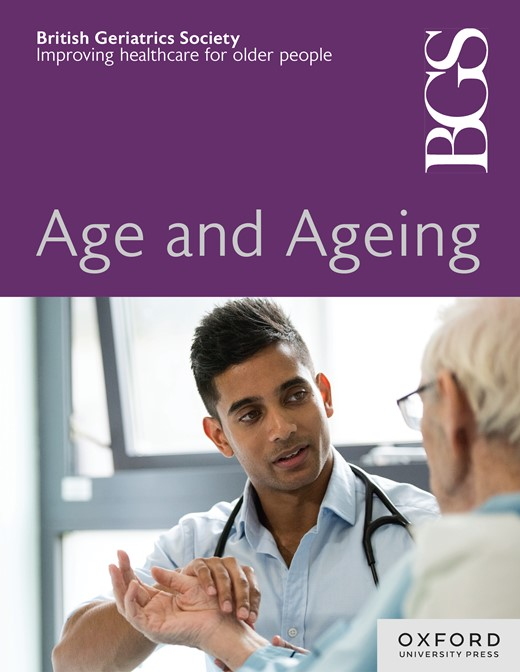院内用药变化对老年住院患者临床结局的影响:过程与终点
IF 6
2区 医学
Q1 GERIATRICS & GERONTOLOGY
引用次数: 0
摘要
背景:在老年住院患者的药理学管理中,药物审查是不可或缺的。目的探讨院内用药变化与出院后28天临床结局的关系。方法对2000例年龄≥75岁的住院患者进行回顾性队列分析。药物变化包括(i)所有药物的增加(药物开始或剂量增加)和减少(药物停止或剂量减少)的数量,(ii)药物负担指数(DBI)影响药物和(iii) 2015年比尔斯标准药物(潜在不适当药物,pim)。变化还包括出院时与入院时(i)药物数量、(ii) pim数量和(iii) DBI评分的差异。使用逻辑回归确定与临床结果(28天急诊科就诊、再入院和死亡率)的关联,并根据年龄、性别和主要诊断进行调整。对于死亡率,敏感性分析排除了因死亡风险较高的临终患者。患者分为:(i)≤4种,(ii) 5-9种,(iii)≥10种出院药物。结果平均年龄86岁(SD = 5.8),女性占59.1%。药物改变降低了使用5 - 9种出院药物的患者的急诊科就诊和再入院风险,而使用≤4种和≥10种药物的患者没有相关性。在5 - 9种药物组中,pim的降低降低了ED就诊的风险(调整优势比,aOR 0.55, 95% CI 0.34-0.91, P = 0.02)和再入院的风险(aOR 0.62, 95% CI 0.38-0.99, P = 0.04)。减少dbi相关药物可降低再入院风险(aOR 0.71, 95% CI 0.51-0.99, P = 0.04)。pim的差异降低了ED就诊风险(aOR 0.65, 95% CI 0.43-0.99, P = 0.04)。在所有组的敏感性分析中均未发现与死亡率相关。药物改变与减少急诊科就诊和服用5 - 9种出院药物的患者再入院有关。本文章由计算机程序翻译,如有差异,请以英文原文为准。
Impact of in-hospital medication changes on clinical outcomes in older inpatients: the journey and destination
Background Medication review is integral in the pharmacological management of older inpatients. Objective To assess the association of in-hospital medication changes with 28-day postdischarge clinical outcomes. Methods Retrospective cohort of 2000 inpatients aged ≥75 years. Medication changes included the number of increases (medications started or dose-increased) and decreases (medications stopped or dose-decreased) for (i) all medications, (ii) Drug Burden Index (DBI)–contributing medications and (iii) Beers Criteria 2015 medications (potentially inappropriate medications, PIMs). Changes also included differences in (i) the number of medications, (ii) the number of PIMs and (iii) DBI score, at discharge versus admission. Associations with clinical outcomes (28-day ED visit, readmission and mortality) were ascertained using logistic regression, adjusted for age, gender and principal diagnosis. For mortality, sensitivity analysis excluded end-of-life patients due to higher death risk. Patients were stratified into : (i) ≤4, (ii) 5–9 and (iii) ≥10 discharge medications. Results The mean age was 86 years (SD = 5.8), with 59.1% female. Medication changes reduced ED visits and readmission risk for patients prescribed five to nine discharge medications, with no associations in patients prescribed ≤4 and ≥ 10 medications. In the five to nine medications group, decreasing PIMs reduced risks of ED visit (adjusted odds ratio, aOR 0.55, 95% CI 0.34–0.91, P = .02) and readmission (aOR 0.62, 95% CI 0.38–0.99, P = .04). Decreasing DBI-contributing medications reduced readmission risk (aOR 0.71, 95% CI 0.51–0.99, P = .04). Differences in PIMs reduced ED visit risk (aOR 0.65, 95% CI 0.43–0.99, P = .04). There were no associations with mortality in sensitivity analyses in all groups. Discussion Medication changes were associated with reduced ED visits and readmission for patients prescribed five to nine discharge medications.
求助全文
通过发布文献求助,成功后即可免费获取论文全文。
去求助
来源期刊

Age and ageing
医学-老年医学
CiteScore
9.20
自引率
6.00%
发文量
796
审稿时长
4-8 weeks
期刊介绍:
Age and Ageing is an international journal publishing refereed original articles and commissioned reviews on geriatric medicine and gerontology. Its range includes research on ageing and clinical, epidemiological, and psychological aspects of later life.
 求助内容:
求助内容: 应助结果提醒方式:
应助结果提醒方式:


